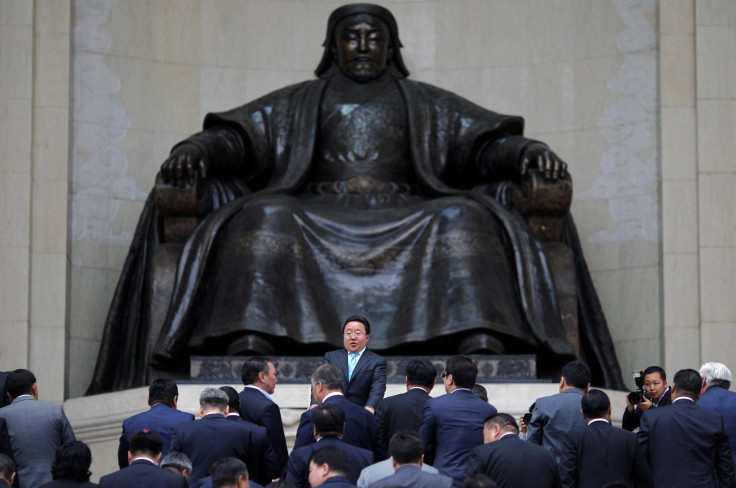Genghis Khan's Descendants: Are You Related To The Mongolian Ruler?

Millions of men in Asia can trace their ancestry 800 years back to Mongolian conqueror Genghis Khan, but what some may find surprising is how the great khan’s lineage over that time has continually been able to produce sons and continue the heritage, according to researchers. Genghis, however, who died in the year 1227, was not the only one boasting a wide family tree. Scientists announced over the weekend nine other extraordinarily fertile and powerful men who have helped populate swaths of Asia.
“Lots of men have lots of sons, by chance. But what normally doesn’t happen is the sons have a high probability of having lots of sons themselves,” Mark Jobling, a geneticist at the University of Leicester in England, told weekly science journal Nature. “You have to have a reinforcing effect.” Genghis Khan’s genetic legacy was first discovered in 2003, when Chris Tyler-Smith, an evolutionary geneticist, discovered that 8 percent of men in 16 populations spanning Asia, or 0.5 percent of men worldwide, shared nearly identical Y chromosome sequences. Genghis had four legitimate, acknowledged sons, but probably many more.
Y chromosomes are directly passed down from father to son. A male has the same Y chromosomes as his father, grandfather, and so on, barring minute mutations that take place each time the chromosome is replicated and passed down. Since 0.5 percent of men worldwide have nearly identical Y-chromosomes, this means that these men can trace their lineage to Genghis Khan 800 years ago, according to the researchers.
Jobling’s team, however, has now identified nine other men who could have similar successful Y-chromosome lineages throughout Eurasia. One of them is Qing Dynasty ruler Giocangga, who died in 1582, before the Qing conquered China, and another from the medieval Uí Néill (O'Neill) dynasty in Ireland. The 10 men’s genes were found to have proliferated from Western Europe to Southeast Asia dating between 2100 B.C. and A.D. 700. Of the list, Genghis Khan’s and Giocangga’s lineages stood out, according to Jobling’s report in the European Journal of Human Genetics, but Jobling said that the dates have a wide margin of error, according to Nature.
Establishment of such successful lineages often depends on social systems that allow powerful men to father children with multitudes of women, such as harems. Some lineages seem to have expanded westwards, possibly along the Silk Road trade route, according to the research. In some cases, Jobling said, sons may have been relegated to satellite outposts, where they, in turn, fathered incredibly fertile male children too.
Nature reported that more research is needed still, according to Jobling’s team, and recovering DNA from the suspected ancestor would be the ultimate proof to seal their research. “Looking for these links is fascinating. When we did it, we were using pretty indirect lines of reasoning, and you could try and do that with each of these lineages,” says Tyler-Smith, according to Nature. “What I really hope is that at some point someone will find Genghis Khan's tomb and remains.”
© Copyright IBTimes 2025. All rights reserved.






















